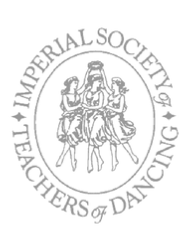
Ballet, Tap,
Jazz Dance and Pilates
for adults

The Imperial Society of Teachers of Dancing (ISTD) is the world's leading dance examination board. Formed in 1904 it is today a registered educational charity.
Each year upwards of 250,000 people are examined by the ISTD. Further details, publications, tapes & videos are available from the ISTD, Imperial House, 22/26 Paul St., London EC2A 4QE (020 7377 1577) and from the ISTD website (www.istd.org)
ISTD Graded Examinations
Modern Theatre Dance makes a distinctive contribution to the education of all students, in that it uses movement, which is the fundamental mode of human expression. It offers a range of learning opportunities and enables participants to enjoy physical expression as well as develop intellectual sensibilities.
As they work together in Modern Theatre, candidates learn about co-operation and develop an understanding of the shaping of movement into artistic forms of expression. Graded Examinations in Modern Theatre Dance are concerned with progressive mastery in defined stages within the context of safe dance practice.
Aims
The aim of Graded Examinations is to provide an assessment scheme for dance, which gives the basis for the measurement of the individual candidate's progress and development, whether the candidate is pursuing dance as a leisure activity or as preparation for a professional career as a dance teacher or performer.
There are six practical examination grades, numbered from 1 to 6, in order to indicate the increasing order of difficulty (6 represents the highest level of attainment).
Objectives
The syllabus objectives for Modern Theatre Grades are set out below:
• Teach correct posture
• Develop the range of movement within the students' natural capabilities
• Build a sound technique
• Promote the understanding and use of dance terminology
• Gain a good sense of line through body, arms and head
• Understanding of rhythm and its development
• Appreciation of varying musical styles and their interpretation
• Develop an awareness of the use of space
• Awareness of audience and sense of performance
• Encourage a sense of self-expression
• Encourage creative use of movement
• Promote self-confidence in the performance of a solo
Learning Outcomes and Progression
Candidates develop the skill and understanding of Modern Theatre Dance, at the same time as building a sound technique, by developing the physical ability to communicate through movement in an expressive and artistic way.
A clearly defined structure allows learning to take place in the context of safe dance practice. The Graded Examinations build up progressively, ensuring that steps and skills learned at lower levels prepare for more complex movements as the candidate progresses.
Each Modern Theatre Graded Examination allows candidates to progress to the next higher grade in the Modern Theatre genre. Also, a range of transfers to other dance genres becomes possible as the candidate develops physically and learns common skills such as running, uses of arms, posture, timing and rhythmic awareness. In this way, with additional teaching input, the candidate is able to develop a broad base of dancing skills.
Following on from the Graded Examinations, candidates may wish to progress to the Vocational Graded Examinations as preparation for employment as a professional dancer or as preparation for dance teaching qualifications.
The Graded Examinations in Modern Theatre Dance also allow for those participating solely for recreational purposes to produce quality work in a safe dance context.
ISTD
